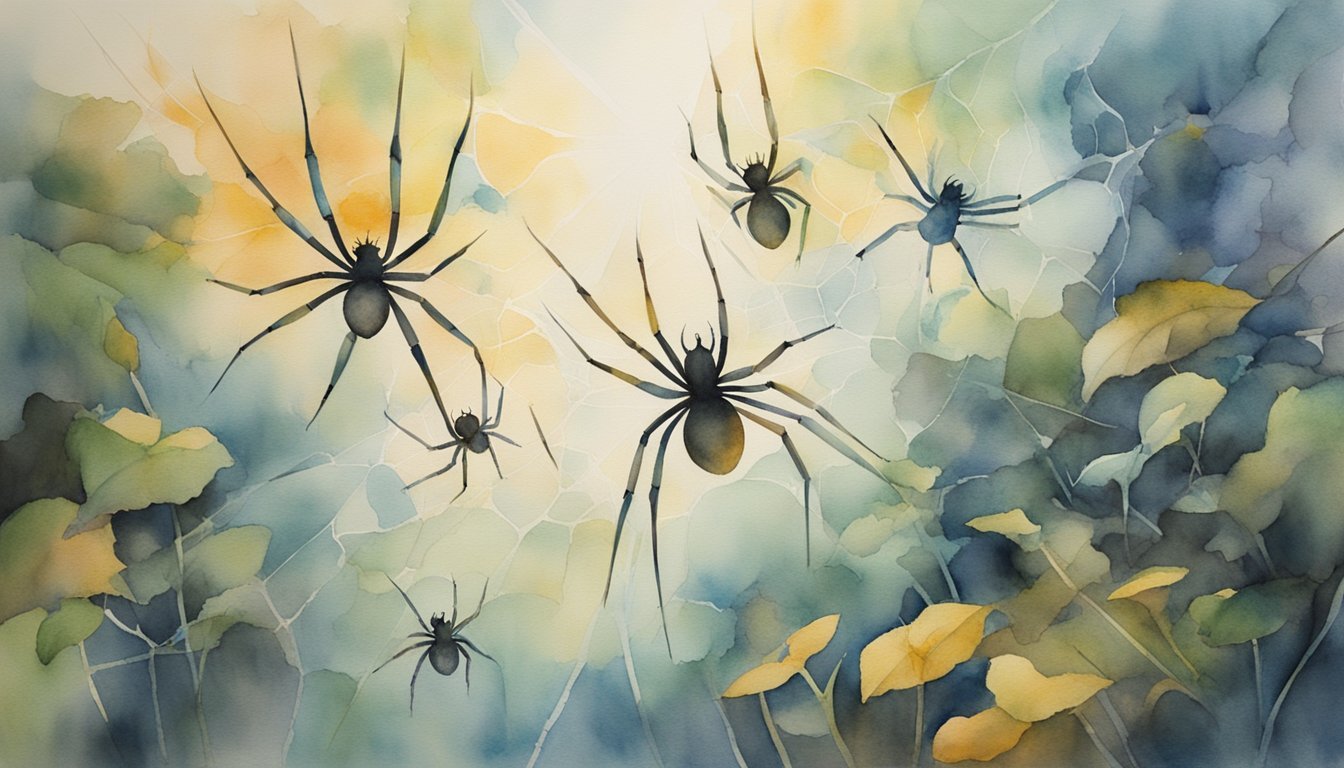Understanding Flying Spiders
Flying spiders have intrigued scientists with their unique mode of aerial travel, known as ballooning, which is unlike that of winged insects or birds. They utilize silk to catch the wind, enabling them to move through the air over great distances.
Anatomy and Adaptations
Spiders have adaptations that facilitate their ability to balloon, which includes a lightweight body and the capability to produce silk. Their abdomen contains silk-producing glands called spinnerets. When a spider is ready to balloon, it climbs to an elevated location, raises its abdomen to release silk strands into the air. The specific anatomy involved in this ballooning process is a unique evolutionary adaptation among certain spider species.
The Science of Ballooning
Ballooning is a method by which spiders can fly by using their silk to catch the wind, creating a kite-like effect. This behavior is also influenced by the Earth’s electric fields, aiding the spiders in their lift off. It allows arachnids like the bridge spider (Larinioides sclopetarius) and the Joro spider, originally from East Asia but also found in the United States, to disperse and colonize new areas.
Distribution and Habitat
While flying spiders have been recorded in various locations around the world, including Asia, North America, and Europe, they are adept at spreading to new regions, sometimes leading to unintended invasions. For example, the Great Lakes region and the East Coast of the United States have observed an increase in populations of Joro spiders, raising concerns about their impact on native species and ecosystems. Despite the seemingly alarming concept of flying spiders, they generally pose little threat to humans and are more a testament to the diverse adaptations of arachnids.
Flying Spiders and Human Interaction

The interplay between flying spiders and humans garners much curiosity due to the spiders’ unique ability to travel using silk as a means to catch the wind for dispersal, which holds various implications for both species.
Environmental Impact
Flying spiders, such as the gray cross spider, harness silk strands to catch the wind and travel considerable distances. Their flight, or more accurately their gliding capability called ballooning, can lead them to bridge continents and even cross oceans. This not only displays their remarkable lift and airborne capabilities but also has profound effects on ecosystems. In forests and urban areas like Chicago, the presence of these spiders through ballooning can impact local insect populations, as they feed on common urban pests, including the invasive brown marmorated stink bug.
These spiders can also migrate into new regions inadvertently. For instance, spiders in Georgia may find themselves in Oklahoma via wind currents, assisting in the spread of various species across the United States. This dispersal has led to a phenomenon known as the “Chicago phenomenon,” where ballooning enables spiders to occupy spaces in human environments, thus altering the ecological balance. While their venom is not a significant threat to humans, their expanding habitats do necessitate further study.
Cultural Significance
Spiders, including those that can fly, have long been the subject of fascination and dismay. Cultural attitudes towards these creatures often reflect a blend of intrigue and apprehension. In some societies, the ability of spiders to traverse vast distances by creating silk threads that catch the wind is symbolic of freedom and connection. National Geographic highlights how spiders like the Selenops, also known as flatties, utilize their silk as a ‘web parachute,’ noting the artful nature of their flight, close to what one might call flying with style.
Research and Study
Academically, the study of flying spiders opens a window into the mechanics of flight in the animal kingdom. Researchers at institutions like the Advanced Institute for Aeronautics continue to study the drag acting on a spider-dragline to understand better the physics of how such small creatures can achieve lift and remain airborne. Observations of spider ballooning behavior provide insights into protandry, a mating strategy where males mature earlier than females and immediately take to the air, casting out silk threads and catching the wind to find mates on distant tree trunks. These findings have contributed to an understanding of spider ecology, reproductive strategies, and evolutionary biology, which is as interesting as it is varied.

